A Ramenista’s Diary
EACH culture has its signature broth and noodle combination. Japan, however, makes a good case for the most enduring love affair with a steaming bowl. Although ramen originated from China, countless Japanese cooks have done with it what they’ve also accomplished with tea or curry: they’ve turned it Japanese.
Three basic kinds of ramen exist, according to the base flavor: there’s shio (salt), shoyu (soy sauce) or miso (soybean paste). But a long list of ramen variations — featuring different types of broth, toppings or regional ingredients — means it will take years before a fan can honestly claim to “know” ramen.
In Cebu, where should the aspiring ramenista start? We asked around for the best-loved ramen joints, then requested each place’s staff for their recommendations. Here, curious reader, are six possibilities. Go there hungry.
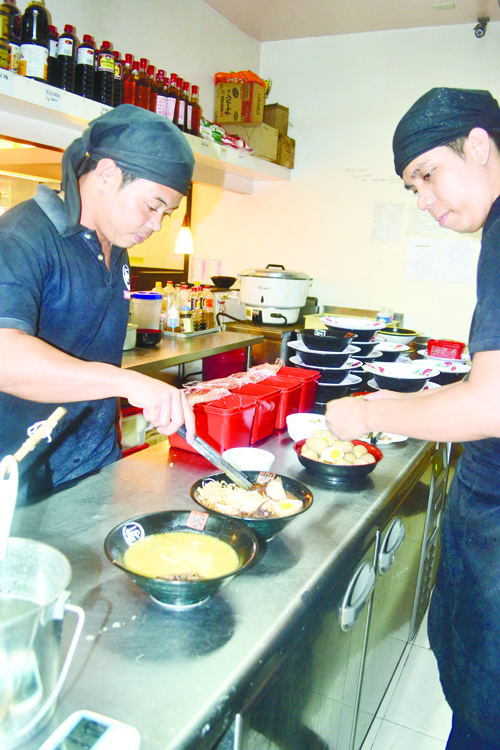
Banri Noodle House
Like a bowl of good ramen, Banri Noodle House is all about balance. Simple but comfortable furnishings welcome each diner, from the new explorer to the discerning regular. Stacks of bowls on the wooden counter hint of how busy the restaurant can get. You only have to sample its ramen to understand why.
The chasyumen (P280) arrives piping hot, the pork and chicken broth fragrant and flecked with golden bits of fat. The noodles are thin yet pleasantly springy, but the real stars are the slices of homemade chasyu ham. Each slice is lean but tender; each bite echoes the flavors of the soy sauce-infused broth, only more concentrated.
Banri serves 19 varieties of ramen, with prices ranging from P200 to P320 per bowl. The chasyumen costs P280 and is well worth it. Those who like their noodle soup pungent, for example, will be drawn to the pirikara goma miso ramen (P320), which the detailed menu describes as “ramen in spicy miso-based pork and chicken stock, topped with ground pork, bean sprouts, mixed vegetables and sesame seeds.”
Where is it? Banri is located in the Crossroads in Banilad, Cebu City and operates from 11 a.m. to 2 p.m. and 6 to 10 p.m. on Monday to Saturday. On Sunday, it forgoes the mid-afternoon break and stays open for 11 hours straight. Call their Banilad branch (234-0788) or Mactan (341-3720) for reservations.
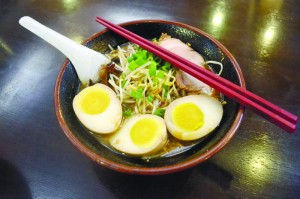
Kotobukiya
It reportedly takes a minimum of five hours to simmer the stock that warms every bowl of noodles in Kotobukiya. Their effort shows, whether you prefer the light shoyu-based broth, or the darker and richer miso-based soup.
This noodle shop offers four categories of ramen: shoyu, miso, shio or spicy. Whichever base flavor you choose, the kitchen can prepare a colorful, nourishing bowl that features the topping you prefer, from bean sprouts and roast pork, to seafood and vegetables. Order ajitama and you’ll get an extra egg. For P35, you can order an extra serving of noodles if you’ve saved some of the broth.
Kotobukiya also serves several varieties of tsukemen, which is ramen served in two bowls—one for the noodles and one for the broth. You dip the noodles before slurping. Because the servings are generous, diners on a diet have the option to order the mini-bowl (for P190) for all the flavors, except shoyu.
Twenty-five varieties of ramen fill the Kotobukiya menu, which means you’ll be spoiled for choice. Two quick hints that the kitchen knows their ramen? The miso broth is never grainy, which means the cook knew exactly when to add the soybean paste. Also, different types of noodles are served, depending on the chosen broth. Good food and a fast, friendly service crew make this a must-stop for your ramen explorations.
Where is it? Kotobukiya’s only branch in Cebu operates in the J Centre Mall on A.S. Fortuna St., Mandaue City. You may reach them at 520-2913 or 421-1581.
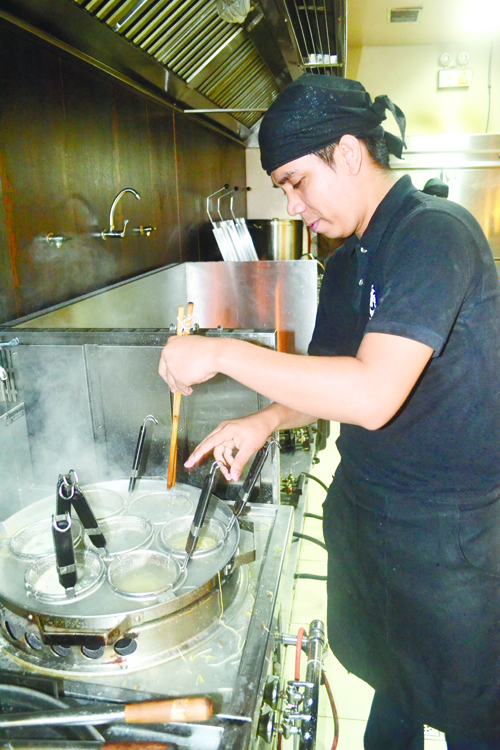
Q-Bay Restaurant
Ramen leans closer to fast food than fine dining. Ramen-ya (noodle shops) tend to be small, cozy places, with little more than a few tables and a bar/counter for those who want some of the sights and scents of a busy kitchen.
Q-Bay was apparently designed to be a more stylish update on the family-owned noodle joint. It tends to attract a young crowd, which means you can slurp away to your heart’s content, because you’ll hardly hear yourself above the din.
It serves 11 varieties of ramen and chashu men, at P209 to P499 per bowl. The staff’s pick, the tonkotsu-chashu men, arrives in a pretty, speckled bowl large enough to drown one’s sorrows in. The pork bone-based soup is opaque and eggy, the noodles thin but perfectly cooked, and the large slices of roast pork (chashu or chasyu) are fatty and tender. It is a good bowl, despite the slight disappointment of an overdone boiled egg.
As a nod to Korean clients, Q-Bay also serves a shoyu ramen with kimchi, egg and scallions.
Where is it? Q-Bay is in the Skyrise 4 Building in IT Park, Cebu City and operates from 6 p.m. Saturday to 4 a.m. and from 6 p.m. to 2 a.m. on other days. Go to the loft for a quieter spot, but stay downstairs if you want to enjoy your noodles among the young.
Ramen Kamekichi
Don’t let the spare interiors and faux-wood tabletops fool you. This place offers the richest variety of ramen in Cebu City, with at least 25 preparations, nearly all of them with a loyal following among local ramen fans.
A bowl of special shoyu-based ramen will set you back P320. You’ll get a hearty, hot broth that has a thin sheen of fat on top but doesn’t taste oily; thick, springy noodles (with an extra order of noodles available for P80); and for toppings, a pretty slice of naruto (fish cake) and braised pork slices that fall apart at the lightest touch of your chopsticks.
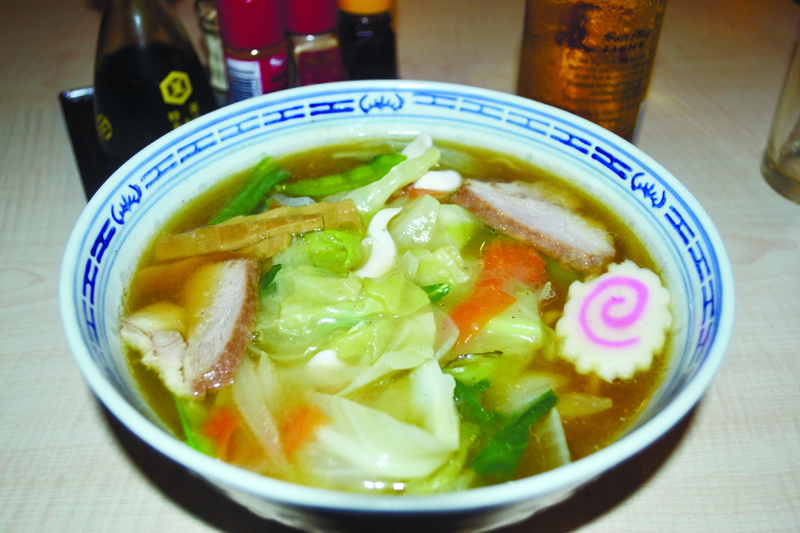
Ramen Kamekichi serves bowls of noodles you’ll want to cup in your hands: flavorful, unpretentious food that will warm your belly. Fans of good Japanese soy sauce might want to try their koikuchi ramen or chashumen options. The jigoku ramen and tsukemen are served in varying degrees of heat or pungency (spicy levels 1 to 3, the noodle shop calls it), depending on your preference. For an extra P60, a bowl of chashumen can be amped Banri Noodle House
Like a bowl of good ramen, Banri Noodle House is all about balance. Simple but comfortable furnishings welcome each diner, from the new explorer to the discerning regular. Stacks of bowls on the wooden counter hint of how busy the restaurant can get. You only have to sample its ramen to understand why.
The chasyumen (P280) arrives piping hot, the pork and chicken broth fragrant and flecked with golden bits of fat. The noodles are thin yet pleasantly springy, but the real stars are the slices of homemade chasyu ham. Each slice is lean but tender; each bite echoes the flavors of the soy sauce-infused broth, only more concentrated.
Banri serves 19 varieties of ramen, with prices ranging from P200 to P320 per bowl. The chasyumen costs P280 and is well worth it. Those who like their noodle soup pungent, for example, will be drawn to the pirikara goma miso ramen (P320), which the detailed menu describes as “ramen in spicy miso-based pork and chicken stock, topped with ground pork, bean sprouts, mixed vegetables and sesame seeds.”
Where is it? Banri is located in the Crossroads in Banilad, Cebu City and operates from 11 a.m. to 2 p.m. and 6 to 10 p.m. on Monday to Saturday. On Sunday, it forgoes the mid-afternoon break and stays open for 11 hours straight. Call their Banilad branch (234-0788) or Mactan (341-3720) for reservations.
UCC Café
The most striking thing about the UCC Cafe’s ramen list is that it offers diners the most choices for customizing their bowl. They serve three types of broth: tonkotsu (based on pork bone, simmered for hours), assari torigare (clear chicken broth) and tantanmen (spicy chicken or pork broth, with Sichuan sesame noodles). You then choose which base flavor will season your broth, whether it’s salt, soy sauce or soybean paste.
Best of all, you can choose from a long list of extra toppings, which includes menma (pickled bamboo shoots), nori (dried seaweed), tori karaage (fried chicken), butter (yes, butter!), corn and ajitsuke tamago (eggs).
The eggs that UCC serves with its ramen speak volumes. In the better ramen-ya, the eggs are gently spun moments after being dropped in boiling water; this allows the yolk to set in the center, which makes for a prettier sliced egg. Once cooked and peeled, these are then marinated for a few hours in a mixture of soy sauce, sake, mirin or sweet rice wine, garlic and scallions. In Cebu, UCC’s eggs come closest to the ideal result.
The prices make their ramen a bit of a splurge (P359 to P399 per serving), but they make up for it with their knowledgeable service, smart interiors and a hot, nourishing bowl that’s prepared according to personal specifications.
Where is it? UCC Café is in The Ayala Terraces.
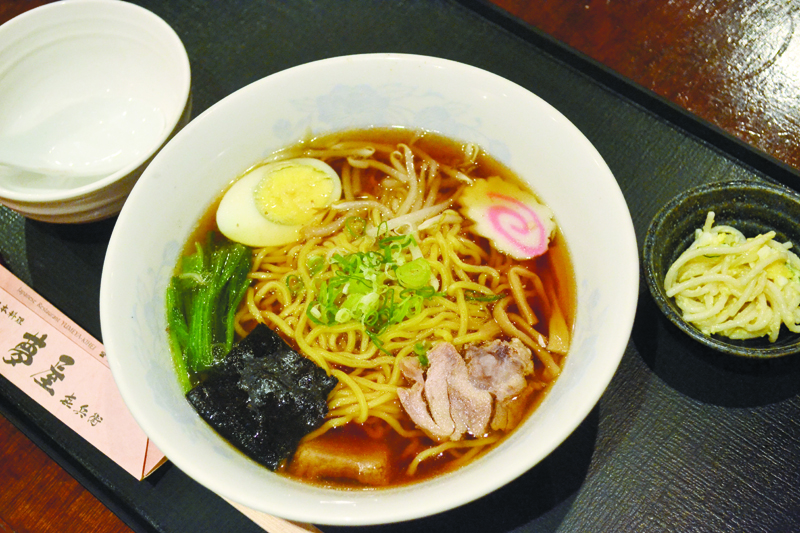
Yumeya Kihei
One of Cebu City’s better Japanese restaurants, Yumeya Kihei serves several soba and udon dishes, as well as three types of ramen. These are shoyu, tan men (with a broth based on vegetables and salt) and miso, for P260 per bowl. It also offers a ramen set meal, which includes a bowl of ramen, some gyoza and yakimeshi (fried rice) for P390.
Quick, kimono-clad wait staff will bring you a quirky appetizer (pickles one day, spaghetti with mayonnaise on another) before your ramen arrives. Yumeya’s shoyu has a light, somewhat delicate taste; the bamboo shoots, fish cake, lean pork slices and hard-boiled egg are lightly-seasoned as well. It’s the noodles — chewy, substantial and rich — that make the dish. They’re what come to mind when food writers rave about “a good mouth feel.”
Where is it? Yumeya Kihei is in the Pacific Square Building in Mabolo, Cebu City (before Castle Peak Hotel, if you’re going north) and operates from 11:30 a.m. to 2:30 p.m. and 5:30 p.m. to 10:30 p.m. Call them at 234-2388.
One of the best qualities of ramen is its simplicity, its lack of ritual and fuss. When done right, a simple bowl of noodles, broth and toppings can turn around a bad day, help end colds or fights, and send you home ready for a deep, restful sleep. Let us know which one of these ramen houses bowled you over. (N.D. Plume)

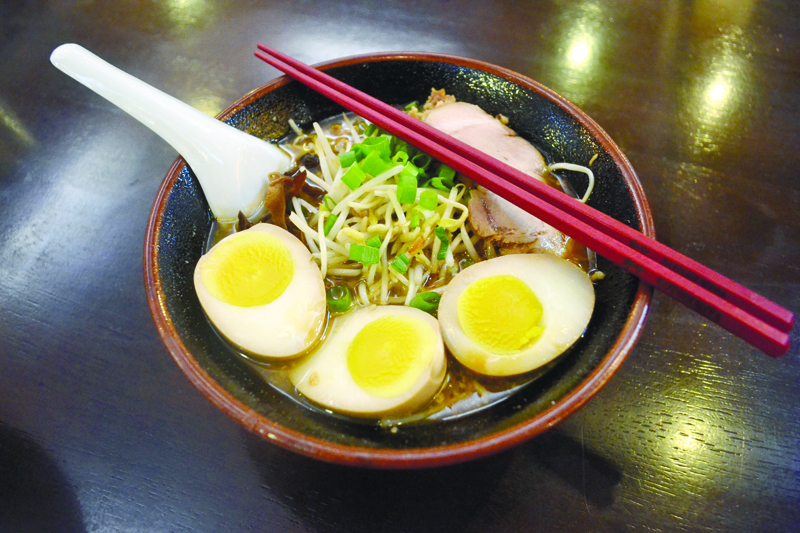



Please fix the “Ramen Kamekichi” part. The article for “Banri Noodle House” was copy-pasted after the third paragraph. Even the last sentence in the third paragraph is already about Banri. You’re welcome. 🙂